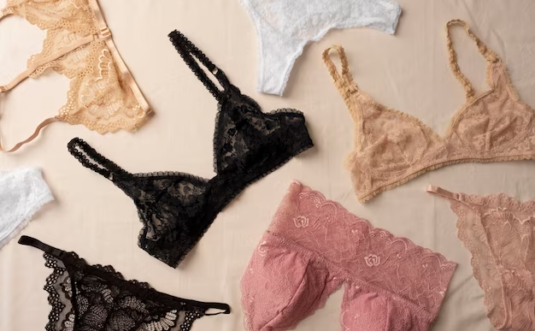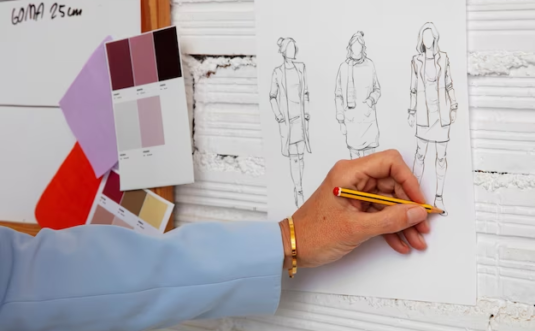To assist your freelance clients in launching a clothing line or embarking on your own venture, it is crucial to grasp the overall concept. Understanding the big picture will enable you to navigate through each stage of the journey successfully. However, if you find yourself searching for a factory while remaining undecided between producing sweaters or sleepwear, you’re essentially working against yourself.
Initiating a clothing line may initially appear daunting, but when you break it down into manageable steps, the entire process becomes much more manageable. Yet, how can you develop a checklist if you lack prior experience in starting a clothing line? Perhaps you’re even venturing into this field without any background in fashion.
Checklist for Launching Your Own Clothing Line
Here’s a comprehensive checklist to provide you with an overview of starting a clothing line:
- Conceptualize an idea that fulfills a market need;
- Conduct market research and gain insights into your target customers;
- Establish your clothing line business;
- Develop technical sketches and tech packs for your designs;
- Procure fabrics and trims from reliable sources;
- Locate a suitable factory capable of manufacturing your products to your specifications;
- Create samples to evaluate the quality and design of your clothing;
- Implement pre-launch marketing strategies to build anticipation;
- Initiate bulk production of your garments;
- Launch your clothing line and ensure timely delivery to your customers.
1. Generate a Clothing Line Concept that Addresses a Market Demand
In today’s fashion retail landscape, relying solely on aesthetics to sell clothes can be challenging. Merely having a visually appealing design is no longer sufficient. Your product must fulfill a specific market demand.
If your aspiration is to establish a renowned clothing brand, don’t be disheartened by commencing with a single product that caters to a specific need. Consider the success stories of Diane von Furstenberg, who started with wrap dresses, Stance, which began with high-performance socks, and Spanx, initially offering control top pantyhose. These influential clothing brands have evolved into industry giants, all originating from a single distinctive product that met a market need.
2. Conduct Thorough Market Research and Understand Your Target Customers
After conceiving a promising clothing line idea, it is vital to subject it to testing to ensure its marketability. This is where market research becomes invaluable, preventing you from investing substantial time and money into creating a product that lacks consumer demand.
Although market research may not seem particularly glamorous, it is the most effective means of testing and enhancing your concept prior to making substantial investments in your clothing line. It is an ongoing process that involves engaging with potential customers to obtain feedback on both your idea and eventually your product samples. By consistently seeking insights from your target audience, you can refine your offering to better meet their needs and preferences.
3. Establish Your Clothing Line Business
Having a brilliant idea and conducting preliminary research is just the beginning. It’s now time to establish your clothing line business, and although it may seem overwhelming, the process is not as complicated as it may appear.
To set up your clothing line business, follow these steps:
- Register your trade name with the Secretary of State;
- Establish a Limited Liability Company (LLC) or Corporation, depending on the regulations in your state (choose the option that suits your needs better);
- Obtain an Employer Identification Number (EIN) to avoid using your social security number;
- Purchase your domain name (GoDaddy.com is a popular choice for this);
- Open a business bank account that offers free services with no minimum balance requirement. Consider reaching out to credit unions and local banks, which often provide more personalized services compared to national banks. Avoid unnecessary fees at all costs;
- Set up a PayPal business account if you plan to sell your products online;
- Secure your social media handles, including Instagram and other relevant platforms.
4. Develop Technical Sketches and Tech Packs

Having a validated idea and a well-established business, it’s time to embark on the initial production phase: creating technical sketches and tech packs. These serve as the blueprints for your clothing line, much like architectural plans are essential for constructing a house.
For new fashion freelancers, offering tech sketches and tech packs is an excellent service to provide. When you approach factories and suppliers armed with professionally crafted technical sketches and comprehensive tech packs, you will be taken seriously. Factories often receive numerous requests from individuals seeking clothing manufacturing services. If you’ve encountered unanswered inquiries in the past, the lack of professional documentation may have been a contributing factor.
By investing time and effort into developing precise technical sketches and detailed tech packs, you enhance your credibility and increase the likelihood of receiving prompt and positive responses from potential manufacturing partners.
5. Procuring Wholesale Fabrics and Trims for Your Clothing Line
With a clear understanding of your product requirements, it’s time to acquire the necessary fabrics and trims. One common mistake made by startups in the clothing industry is purchasing materials from retail stores such as Mood, the Garment District, or JoAnn’s. These outlets operate on a retail pricing model, which can significantly impact your costs.
To establish your clothing line on the right footing, it is advisable to source fabrics and trims from wholesale suppliers. However, it’s important to note that you may not require hundreds of yards of materials initially.
By exploring wholesale options, you can access competitive pricing and secure the quantities you need without unnecessary retail markups. This approach allows you to optimize your production costs and maintain better control over your overall expenses.
6. Identifying an Ideal Factory for Precise Manufacturing of Your Clothing Line
Now that you have successfully secured fabrics and trims, the next step is to locate a suitable factory for manufacturing your clothing line. However, before you begin reaching out to factories, it’s crucial to ensure you’re fully prepared by following our Pre-Production Checklist.
Here are some helpful tips to guide you in finding a reliable factory:
- Communication and reliability: Pay attention to their communication skills and reliability right from the beginning. A factory that demonstrates good communication and reliability in the early stages is more likely to exhibit these qualities throughout the production process;
- Visit or virtual tour: Whenever possible, consider visiting the factory in person to assess important factors such as the work environment and treatment of employees. If an in-person visit is not feasible, request a virtual tour via Skype or Zoom to gain insights;
- Sample evaluation: Prior to committing to full-scale production, it’s crucial to have a sample made to ensure the quality meets your expectations. This step allows you to assess the craftsmanship and overall quality before proceeding;
- Maintain written records: Since some factories may be reluctant to formalize agreements through contracts, it’s essential to track all relevant details through email communication. If discussions occur over the phone, follow up with an email summarizing the agreed-upon terms;
- Payment terms: It is standard and fair practice to provide a 50% down payment and the remaining 50% upon shipment. Avoid paying the full amount upfront to protect your interests;
- Trust your instincts: Intuition matters. If something feels off or raises concerns, trust your gut instincts. It’s essential to maintain a positive and trustworthy relationship with the factory you choose.
7. Sample Production and Coordination
Once you have chosen a factory, the next step is to order samples. The requirements for sample production may vary depending on your specific clothing line and sales strategy. For instance, if you are planning a pre-sell launch on Kickstarter, your development needs will differ from those of pop-up shops.
You will need to coordinate with your chosen factory regarding sample production, taking into account your launch plan. Discuss the timelines for both sample production and bulk production with the factory, as this information will be crucial for informing your customers about the availability of your designs. It is important to remember that factories have busy schedules and limited capacity, so securing your position in the production line is essential.
8. Pre-launch Marketing and Preparation
While your clothing line is in progress at the factory, it’s crucial to engage in effective pre-launch marketing strategies to build anticipation and excitement among your target audience.
If your plan is to sell your clothing line online, there are several effective approaches you can take. Consider utilizing platforms like Kickstarter to generate interest and support, implement social media marketing campaigns to reach a wider audience, focus on building an email list to communicate directly with potential customers, and organize events or collaborations to create momentum and buzz. For those planning to sell wholesale, it is advisable to schedule appointments with retailers or participate in trade shows to secure pre-orders from interested buyers.
Regardless of your chosen sales approach, there are two key factors that should be prioritized:
- Obtain high-quality product photos that showcase your designs attractively. Compelling visuals play a significant role in capturing the attention and interest of potential customers;
- Secure pre-orders before proceeding with bulk production. This step allows you to gauge demand, minimize risks, and ensure a smoother transition to full-scale production.

9. Placing Bulk Production Order
After successfully securing pre-orders from retailers or consumers, the next step is to proceed with placing your bulk production order. This is an exciting milestone, but it’s crucial to approach it with careful consideration.
It’s common for brands to over-order in their enthusiasm. Despite the appeal of your clothing line, selling can be more challenging than anticipated. Therefore, it is advisable to start with a conservative quantity. Starting small allows you to maintain a sense of scarcity, which can drive demand and create a sense of urgency among your customers. It is far better to run out of stock and create a desire for more than to be left with excess inventory that is difficult to sell.
10. Launch and Delivering Your Clothing Line to Customers
As you prepare for the launch of your clothing line, it’s essential to not only focus on promoting your brand but also have the necessary logistics in place to deliver your products to customers. Pay attention to the following aspects:
| Considerations | Description |
|---|---|
| Packaging and Shipping | Determine efficient and secure packaging methods. Consider appropriate packaging materials. |
| Select reliable shipping partners or services to ensure timely and reliable delivery. | |
| Return Policy | Establish a clear and customer-friendly policy for returns, exchanges, and refunds. |
| Define procedures and guidelines for returns to provide confidence and reassurance to customers. | |
| Post-launch Marketing | Develop a comprehensive strategy for online marketing, including social media and email campaigns. |
| Plan for continued promotion and engagement with the target audience after the inventory arrives. | |
| Create an effective plan for utilizing Facebook ads to maximize impact and avoid unnecessary expenses. |
Conclusion
The essential steps outlined in this guide provide a solid foundation for kickstarting your clothing line. By following the checklist, you can navigate through the critical aspects of starting a fashion brand with confidence. From conceptualization to launch and beyond, these steps will help you lay the groundwork for a successful journey in the fashion industry. Embrace the process, stay focused, and watch your clothing line flourish as you bring your creative vision to life.




